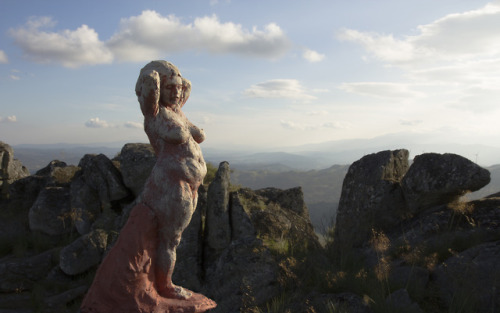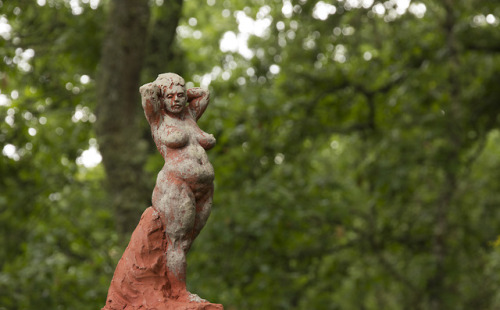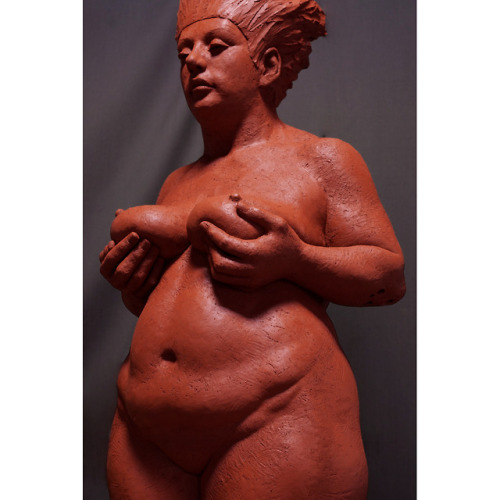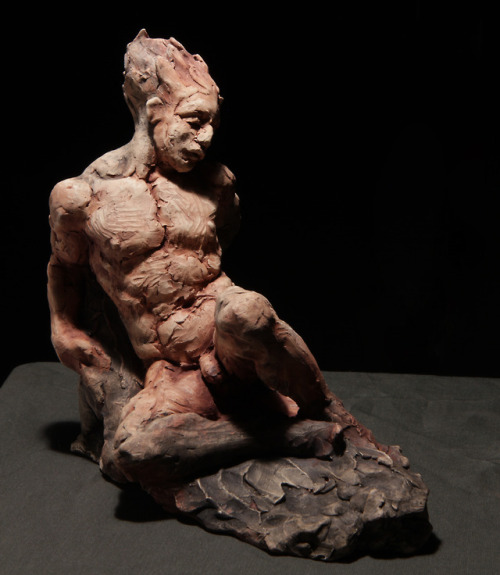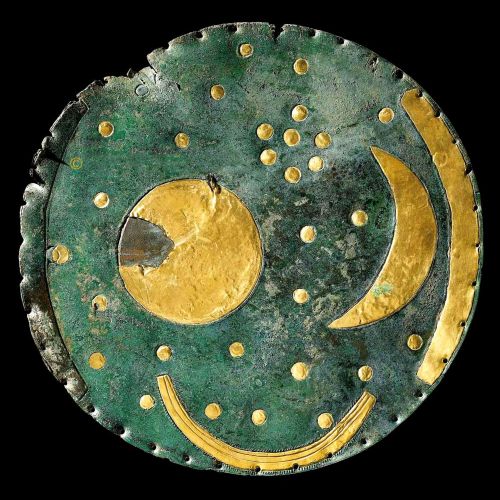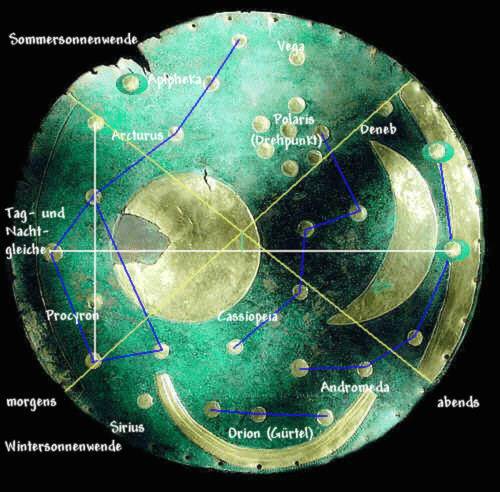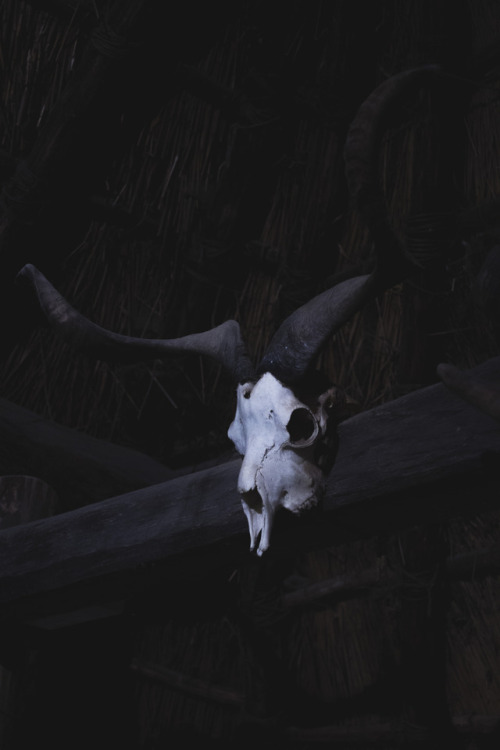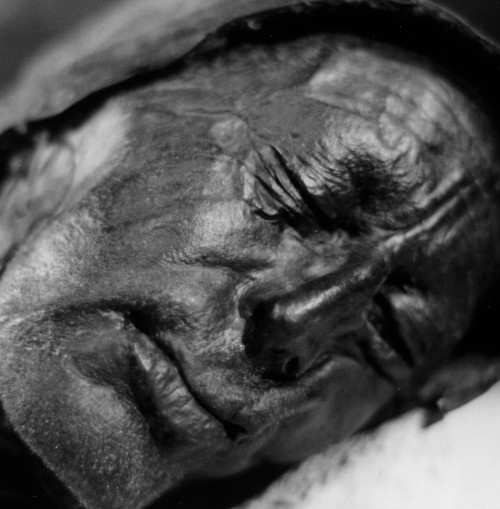#iron age

‘Cerrig Arthur Prehistoric Stone Circle’, Pen and Ink Sketch, April 2020.

Druid’s Temple Dolmen, Masham, Yorkshire, Pen and Ink Sketch, November 2019.

Ballymeanoch Prehistoric Standing Stones, Kilmartin Glen, Argyll, Pen and Ink Sketch and Wash, October 2019.

Nether Largie Standing Stone, Kilmartin Glen, Argyll, Pen and Ink Sketch, October 2019.

Y Ffor (Four Crosses) Prehistoric Burial Chamber, North Wales, Pen and Ink Sketch, October 2019.
All rights reserved. Repost only with credits.

Garton Slack Prehistoric Inscribed Chalk Slab, Pen and Ink Sketch, 31.8.19.
All rights reserved. Repost only with credits.

Stones Monolith, Todmorden, Calderdale, Pen and Ink Sketch, 26.8.19.
All rights reserved. Repost only with credits.
10th Millennium B.C.E. Daggers
Photo #1
- Period: Iron Age II
- Dated: circa 10th–9th century B.C.E.
- Geography: Iran, probably from Luristan
- Medium: Bronze
- Measurements: 4.06 in. (10.31 cm)
Photo #2
- Period: Iron Age II
- Dated: circa 10th–9th century B.C.E.
- Geography: Northwestern Iran, Caspian region
- Medium: Bronze
- Measurements: 2.36 x 17.99 in. (5.99 x 45.69 cm)
Photo #3
- Period: Iron Age II
- Dated: circa 10th–9th century B.C.E.
- Geography: Western Iran
- Medium: Bronze
- Measurements: 13.94 in. (35.41 cm)
Photo #4
- Period: Iron Age II
- Dated: circa 10th–9th century B.C.E
- Geography: Northwestern Iran, Caspian region
- Medium: Bronze
- Measurements: 1.69 x 1.1 in. (4.29 x 2.79 cm)
Photo #5
- Period: Iron Age I/II
- Dated: circa 10th–9th century B.C.E.
- Geography: Northwestern Iran, Caspian region
- Medium: Bronze
- Measurements: 2.36 x 15.51 in. (5.99 x 39.4 cm)
Photo #6
- Period: Iron Age II
- Dated: circa 10th–8th century B.C.E.
- Geography: Northwestern Iran, Caspian region
- Medium: Bronze
- Measurements: 20.75 in. (52.71 cm)
B.C.E. stands for Before Common Era.
Post link
Today, I’ll be taking a look at some pre-Roman cider, from Gaul! As most of our records come from Roman sources, we don’t get much insight beyond “The Gauls are so different to us Romans, they don’t even drink wine! They just drink fermented grains and fruits like barbarians”
And while these are, inherently, totally biased records, they provide a decent look at what they drank! Since we know that apples were cultivated in this region, and has a history of cider production, we can assume that Gauls created archaic forms of cider - which I’ll now attempt to do now!
In any case, let’s now take a look at The World That Was! Follow along with my YouTube video, above! If you like what I make, please consider supporting me on Patreon!
Ingredients
Enough apples for 2-3L apple juice
honey (to taste)
dried yeast
Special Utensils
Glass Demijohn/Terracotta pot
Siphon
DISCLAIMER
Before I begin, I have to reinforce that this is a recipe for an alcoholic beverage, so please don’t make this if you’re underage! Also, check your local laws on home-brewing alcohol - it’s legal for personal consumption where I am, but it might be illegal wherever you are!
Method
1 - Peel and Press Apples
Start by peeling and chopping them up into small pieces. Any kind of apple will work here, but older strains of apples would be sour - which coincidentally make for great cider!
We don’t know exactly how Gauls in antiquity pressed the juice from the apples, it’s possible they were mashed together, and then crushed through a thin cloth. This will allow you to extract most of the liquid from the pulp. Modern cider makers have a specialised press to do this, which is much easier than this method - but is unlikely to have been found in this time period.
I used a potato ricer, which provides an easy modern juice extraction!
2 - Combine Ingredients
When you’ve extracted about 2-3 litres of juice, go pour this into a glass demijohn. Or a terracotta pot. Whichever is easiest for you to use! Into this, pour a sachet of dried yeast - while this wasn’t available in antiquity, it’s a faster and more reliable way of getting the cider to ferment. Wild yeast would have been captured by the juice through contact with the air - but this is unpredictable, and may not result in a strong fermentation process.
Onto all of this, add a few dollops of honey to the mix. This is to sweeten the final mix a little, and even out the sourness of the apples. Adjust this based on how tart your apples are.
When everything is in, swirl it around, making sure everything is combined. Cover the top of your brewing container with a very damp cloth - or a brewing airlock if you have one - and leave the whole thing in a warm, dark place for a few days.
3 - Decant and Drink
The cider should have fermented enough within 6-7 days of sealing, so uncork it (if you’ve corked it) and smell that lovely apple goodness! Decant this using a siphon, taking care not to disturb the sediment at the bottom of the pot.
The finished drink is lovely and smooth, and has a very mild carbonation - thanks to the natural fermentation process. This batch was also quite strong and sweet, due to the honey.
While you can drink this as-is, heating a glass of this up slightly, and adding a spoonful of honey to it really improves the aroma, and cuts the sharpness a little.
All in all, a wonderful drink to keep you warm on an autumn day!
Today, I’ll be making a quick and easy sesame snack from the Cretan Iron Age! A treat so sweet that it’s still popular today (with a few adaptations of course) - the koptoplakous as it’s known in antiquity - or the Pasteli as it’s known today!
In any case, let’s now take a look at The World That Was! Follow along with my YouTube video above!
Ingredients
200g sesame seeds
200g honey
sea salt (to taste)
Method
1 - Toast the Sesame Seeds
To begin with, we need to lightly brown and toast 200g of sesame seeds. Do this by tossing them into a hot pan, and letting them cook over a high heat for a couple of minutes. Don’t let these sit still, keep them moving around the pan so they toast evenly! Do this for about 5 minutes, or until your seeds are nutty and fragrant.
Take these off the heat, but keep them warm while you deal with the honey.
2 - Boil Honey
Next, place a pot onto a high heat. Into this, scoop about 200g of honey and let it heat up. Keep stirring it occasionally with a wooden spoon, so it doesn’t burn. Let this cook away over high heat until it foams up significantly. Much like boiling milk, this will happen very quickly, and might catch you off-guard. If it looks like it’s getting too high, take it off the heat and it’ll cool down pretty quickly.
3 - Mix Honey and Sesame
After about 10 minutes of foaming, turn the heat down to low before tossing in your toasted sesame seeds. Stir all of this together and let it cook for another 5 - 10 minutes. The honey should start to turn a deeper golden brown, but if it gets too dark, take it off the heat immediately.
When it’s been mixed together, pour it out onto a baking tray lined with paper. Spread it out into a fairly thin layer, but not too thin! Let it sit like this for about 20 minutes or so, before slicing it into segments with a knife.
You can serve this up whenever it’s cooled like this, or leave them overnight to re-solidify a little more! Either way, the finished dish is super sweet, and has a delicious nutty flavour, thanks to the toasted sesame seeds.
The modern name for this dish - pasteli - has its origins in medieval Italian cuisine, as this kind of sweet treat is common throughout Europe, the Near East, Asia, and the Indian subcontinent. Though obviously, each region has its own takes on this basic formula, such as the addition of local spices, nuts, or other ingredients!
Today, I’ll be making a simple bread-based soup - referred to as juscellum by Apicius! It’s a lot like Tuscan “aquacotta” soup, which is prepared in a similar way - though today it often includes tomatoes, which would not have been available in antiquity.
And now let’s take a look at The World That Was! Follow along with my YouTube video above!
Ingredients
1 onion
1 carrot
1 stick celery
3 cloves garlic
thyme
2 slices bread (torn or grated)
2 eggs
750ml chicken stock
olive oil
salt
pepper
Method
1 - Chop Ingredients
To begin with, we need to chop and dice an onion. You don’t need to worry about being too careful here, as they’ll soften up considerably while its cooking. Peel and dice a carrot or two - carrots and parsnips were considered to be the same vegetable to the Greeks and Romans, so either one works well here! Finally, deal with some celery by slicing it thinly.
2 - Sautee and Cook
Toss a bit of olive oil into a pot, and place this over a medium heat. When it’s shimmering, toss in your onions, carrots, and crush a few crushed cloves of garlic. Let this sauté away for about 10 minutes.
When it’s finished sautéing, pour in 500ml worth of water or chicken stock. On top of this, toss some chopped thyme Place your soup over a high heat, and bring it to a rolling boil. When it hits a boil, turn the heat down to low and let it simmer away for 30 minutes.
3 - Prepare Soup and Eggs
While your soup is cooking, go rip up some slices into large chunks. Alternatively, you could grate up dried bread into a powder. Toss your bread into the soup about 10 minutes before you’re serving it, along with your parsley.
About 5 minutes before you serve up your soup, place some eggs into the pot and let them hard-boil.
4 - Assemble Soup
In a serving bowl, ladle in some of your soup, and place your poached egg on top of this. Garnish with a little fresh herb. And serve up warm!
The finished soup is very filling and flavourful - along with looking very colourful when finished! It’s quick and simple to make, which would have made it popular with the lower, poorer classes in ancient Roman and Etruscan societies - as this dish can be made using ingredients that are going off (such as stale or mouldy bread). It can be adjusted using seasonal vegetables and herbs, along with different kinds of eggs that would provided different taste profiles.
New print in our etsy shop!! Available asbackpatchandt-shirt!
“An Thríbhís Mhòr, the great triple spiral.”
The triple spiral motif is a Neolithic symbol common to many Indo-European cultures, examples of it are found from the megalithic temples of Malta in the South (4400–3600 BC) to the Northern megalithic tomb of Newgrange in County Meath, Ireland, built around 3200 BC.
The triskelion/triskele is one of the most distinctive motifs in Iron Age Celtic art as well, both as a symbol in itself and forming the geometric basis for more complex artistic compositions. It remained a core symbol in Celtic artistic compositions for over a millennium, recorded throughout the La Têne period across the continent, and a central element in later Insular Celtic art of the early Christian period. Significant also is the fact that the triskele composition is often composed of animals of various types, indicating that the symbol was linked to or emanated from the natural world.
Collaboration with the very talented artist from Siberia Sergey Arzamastsev, who very generously gave us the permission to print his amazing work. You can find more of his artworks at this link: https://www.instagram.com/celticartlogo/
**this print is grey on black, but it’s available in different colour combinations
Post link
“The Trance Ritual”
Here is the finnished drawing of the previous post. It took ages to take a decent photo as the drawing was stubbornly glaring at the camera… hard lessons in photographing drawings… always fun.
Post link
The title for this piece is still undefined but its part of my upcoming sculpture show. It’ll be about the Neolithic period, it’s matriarchal societies and the subsequential transition to more violent eras. Keep in tune for more stories made of stone.
In this piece I experimented with white chalk and grafite mixed together, it can get mushy but some of the results are delicious.
Post link
This weekend I took my latest ceramics experimentation to the wild (my home city). It’s beautiful and super close to incredible locations. The first nature shot was in one of the holiest places of pagan Iberia: “Cabeço das Fráguas”. This site contains an incredibly rare inscription describing a ritual to the old gods in an ancient indo-european language. The rest of the shots where taken in the vicinity of continental Portugal’s highest mountain, Serra da Estrela.
Post link
A sneak peek at the development of this Neolithic Goddess interpretation. After this it’s the Tetris stage… also known as hollowing out… I’ll have to cut the piece into a puzzle, let it dry out, and then, to the kiln. Exciting moments!
Post link
A sketch for a river god piece.
I went to the douro valley for a proper display of the sculpture, a homage to Reve, one of the old gods, with the Douro river in the background.
Post link
Hello friends and foes, here’s an illustration I did for a calendar.


Lady Aileen Fox down a trench (and holding a ranging rod and a trowel) in Exeter in the 1960s with an assistant. Copyright Royal Albert Memorial Museum & Art Gallery, Exeter. Use here with their kind permission.
Aileen Fox (née Henderson), born in 1907, had a privileged childhood of nannies and home tutoring, and she was never expected to go to university. Her mother only allowed her to take the entrance exams for Cambridge on the proviso that she would be presented at Buckingham Palace, which she duly was in 1926.
She started out as an assistant at the excavations of the important Roman fort at Richborough in Kent, potentially the first landing of the invading Romans. This was a very early example of a salvage or rescue dig, spurred on by the destruction of WWII. At that time workmen did most of the digging and assistants cleaned and catalogued the finds. She picked up the work very quickly and soon became indispensable. On her second season she ended up setting up a museum.
She worked under Dorothy Liddell (another TrowelBlazer who deserves recognition!) and with the future Mary Leakey on two digs in 1933, Hembury Hillfort in Devon, and Meon Hill Iron Age settlement in Hampshire. She learned to do her own digging, surveying and sampling there. That autumn she married the widowed archaeologist Cyril Fox, director of the National Museum of Wales. She kept busy helping him excavate and survey local sites while she had her family, but it was on his retirement that she really got going.
After being invited to direct excavations in bomb-damaged Exeter immediately after the Second World War, she taught at what would become Exeter University from 1948 to 1973. The prehistory of the south-west was sadly neglected and she set out to change that, spending many seasons digging and eventually writing the first proper synthesis of the archaeology of the area.
Aileen organised a one-year visiting lectureship at Auckland University in New Zealand. She ended up staying for ten years doing various jobs at the university and museum, rejuvenating the investigation of many Maori pa -hill forts- and helping set up the New Zealand Archaeological Association. It was a fitting end to an adventurous career.
Model Of Maori Pa On Headland - Wikipedia
Written by Kim Biddulph
Edited byBrenna
Read More:
Fox, A 2000. Aileen - A Pioneering Archaeologist. The Autobiography of Aileen Fox. Gracewing: Leominster.
Lady Fox’s Obituary in the Guardian.
Archaeopedia New Zealand’s Aileen Fox entry
The Nebra disc.
The Nebra sky disc is a bronze disc of around 30 cm (12 in) diameter and a weight of 2.2 kg (4.9 lb), having a blue-green patina and inlaid with gold symbols. These symbols are interpreted generally as the Sun or full moon, a lunar crescent, and stars (including a cluster of seven stars interpreted as the Pleiades).
Two golden arcs along the sides, interpreted to mark the angle between the solstices, were added later. A final addition was another arc at the bottom with internal parallel lines (of uncertain meaning, variously interpreted as a solar barge with numerous oars, the Milky Way or a rainbow).
The disc has been attributed to a site in present-day Germany near Nebra, Saxony-Anhalt and was originally dated by archaeologists C1600 BCE, based on the provenance provided by the looters who found it.Researchers initially suggested the disc is an artefact from the Bronze Age Unetice culture, although a later dating to the Iron Age has also been proposed.
If its Bronze Age dating is accurate, the Nebra sky disc features the oldest concrete depiction of the cosmos yet known from anywhere in the world.
Credit: State Office for Heritage Management and Archaeology Saxony-Anhalt, Juraj Lipták
Post link
Early evidence of royal purple dyed textile from Timna Valley (Israel)
The samples originated from excavations at the extensive Iron Age copper smelting site of “Slaves’ Hill” (Site 34), which is tightly dated by radiocarbon to the late 11th–early 10th centuries BCE.
While evidence for the important role of purple dyes in the ancient Mediterranean goes back to the Middle Bronze Age (early 2nd millennium BCE), finds of dyed textiles are extremely rare, and those from Timna are the oldest currently known in the Southern Levant. In conjunction with other observations of the very high quality of the Timna textiles, this provides an exceptional opportunity to address questions related to social stratification and organization of the nomadic society operating the mines (early Edom), the “fashion” of elite in the region during the early Iron Age, trade connections, technological capabilities, and more.
Image by Dafna Gazit,
Courtesy the Israel Antiquities Authority
Post link
Iron Age arrow found on Norway mountain still has feather fletching on it
“"I think it is perhaps just the Ötzi-find which has preserved fletching on arrows, but his arrow fletchings are nowhere as well preserved as some of ours,” Lars Pilø, an archaeologist at the Department of Cultural Heritage, Innlandet County Council, Norway, co-director of the Glacier Archaeology Program, told Live Science in an email.
However, “his are older too, by several thousand years, so this is not to diss Ötzi’s arrows,” Pilø said"
Iron Age subterranean complex discovered beneath Turkish home
““When the Assyrian Empire exercised political power in south-eastern Anatolia, Assyrian governors expressed their power through art in Assyrian courtly style,” said Dr Adalı.
However, the accompanying inscriptions tell the story of integration, rather than conquest. They are written in the local language of Aramaic, rather than Assyrian, and the artwork features religious themes from Anatolia and Syria.”
Bedfordshire A428 dig: Evidence of Roman beer production found
“They said archaeobotanists, who specialise in the study of past human-plant interactions, had since identified that the charred spelt grains were left to germinate before being dried in a kiln.
"As large quantities of grains are only allowed to germinate when the aim is to produce malt - the first step in the brewing process - this strongly suggests the people living at the settlement were involved in beer production,” a Mola spokesperson said.“
5,000-year population history of Xinjiang brought to light in DNA study
““What is striking about these results is that the demographic history of a cross-roads region as Xinjiang has been marked not by population replacements, but by the genetic incorporation of diverse incoming cultural groups into the existing population, making Xinjiang a true ‘melting-pot’,” said Prof. Fu.”













